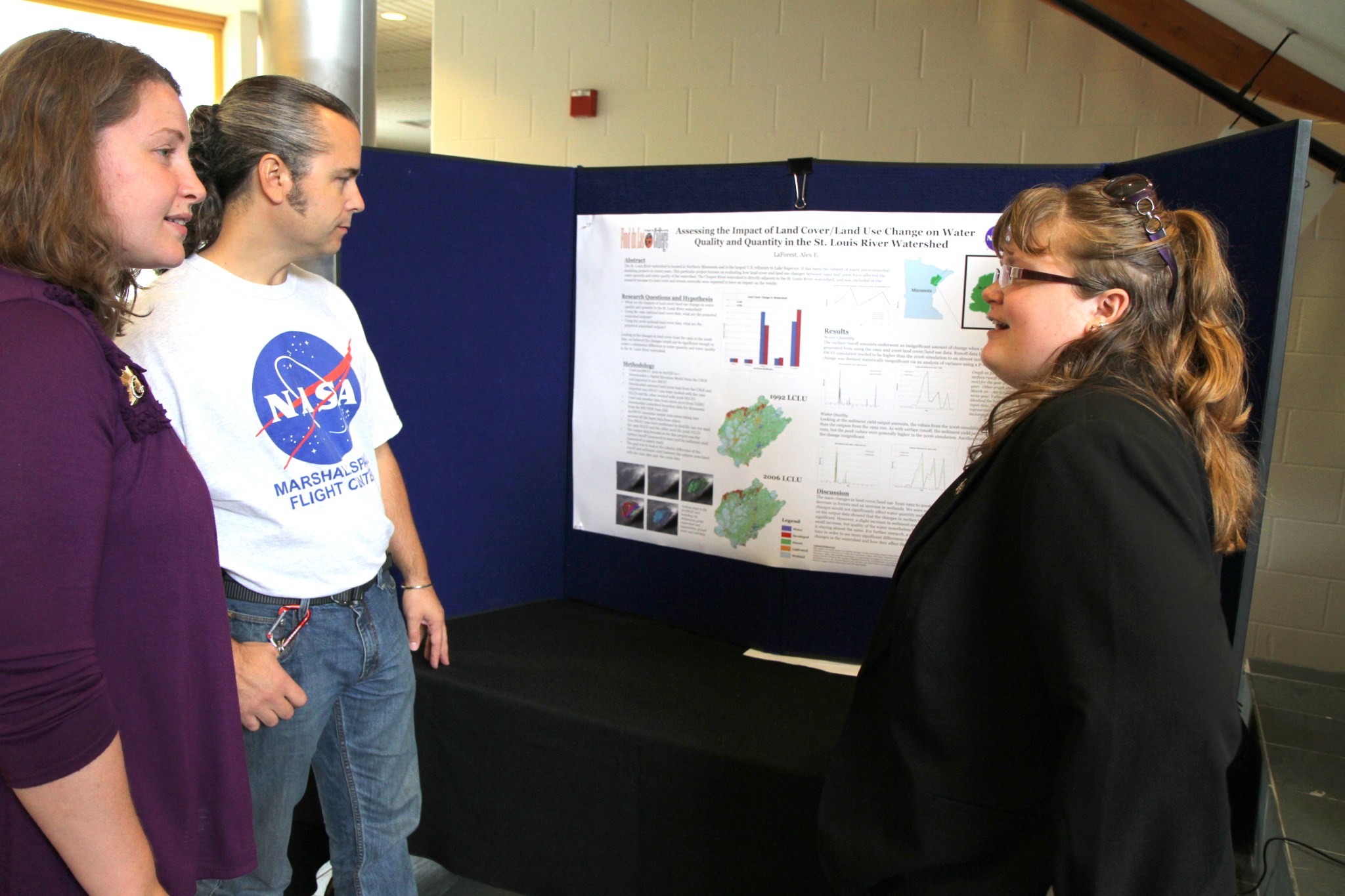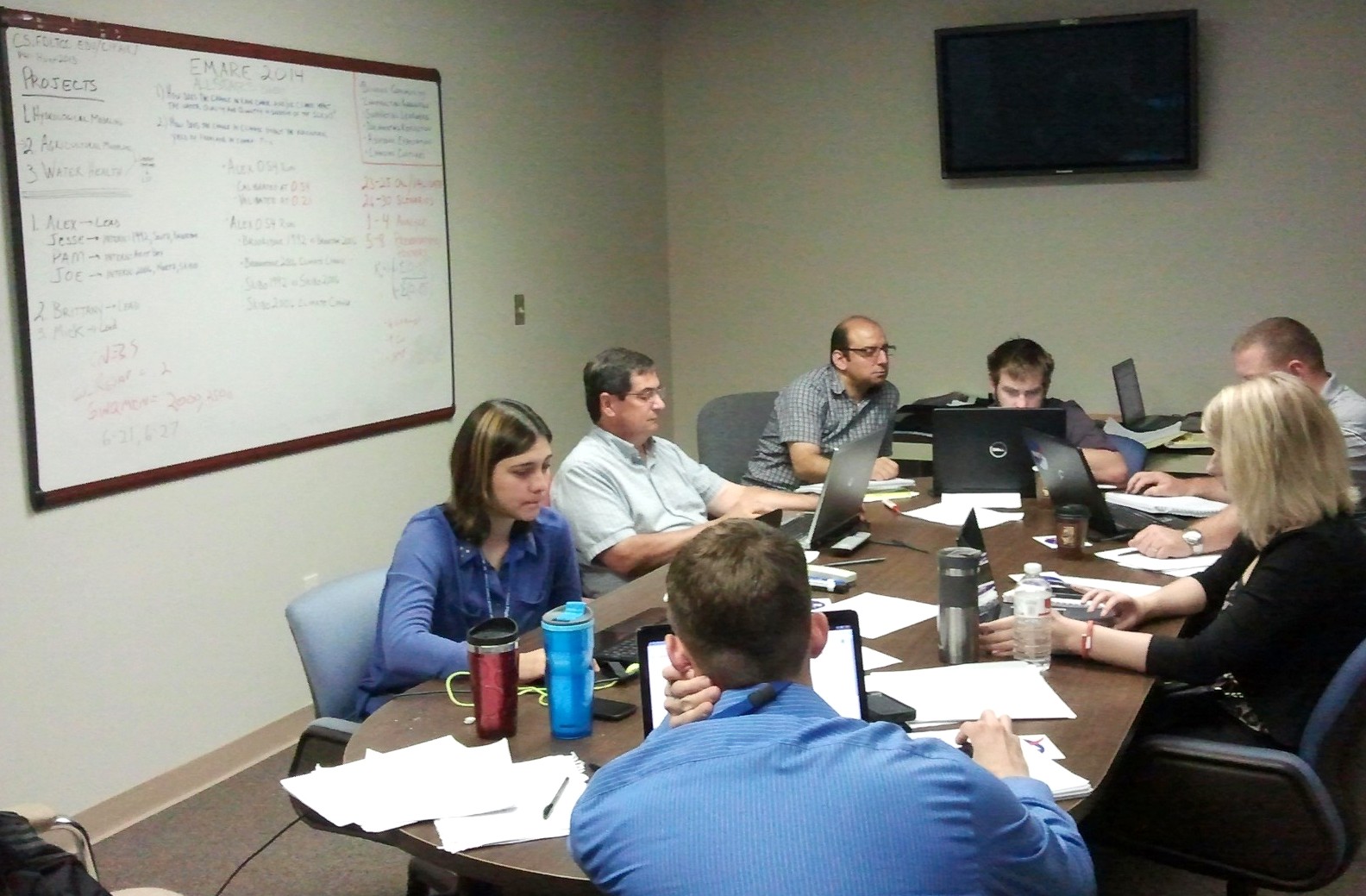Students from the Fond du Lac Tribal and Community College (FDLTCC), in Cloquet, Minnesota, recently completed a three-year research project on environmental issues with NASA’s Marshall Space Flight Center in Huntsville, Alabama.
The students’ project — the Environmental Modeling and Research Experience or EMARE — researched land cover in the St. Louis River watershed of northeastern Minnesota and northwestern Wisconsin. Since 2012, students in the college’s Geospatial Technologies program have completed internships at NASA Marshall, studying satellite data and applying a software model to address local environmental issues.
Fond du Lac Tribal and Community College brings together a Tribal College and a State Community College in an academic partnership. It is a two-year, open enrollment institution with a 21 percent minority student population, including 350 American Indian students each year and a high percentage of underprepared students.
“EMARE spurred our students to realize their potential by offering authentic experience in the scientific workplace,” said Elizabeth Jones, instructor of Geospatial Technologies and Geography at FDLTCC. “Students used remote sensing and computer applications to investigate environmental and public health issues relevant to our communities.”
Paul Larson, a former EMARE graduate student mentor and current planetarium director in Rochester, Minnesota, noted: “They experienced not only the trials and tribulations of software and hardware challenges, but they were immersed in the culture of hardcore, scientific research.”
The students created a hydrologic model to study the impact that different types of land cover have on local water runoff. Urban growth features – such as concrete, asphalt or logging – can increase water runoff, while soil, grasses and wetlands can slow or retain it. Their research addressed real-world population issues and could prove a catalyst for innovative and effective change. Plus, having an up-to-date baseline model can help to identify and catalog future environmental changes.
The success of EMARE also spurred improvement in the college’s curricula with the addition of a new programming course, an undergraduate research course and enhanced content in classes spanning computer science, geography, environmental sciences and more.
Current and former EMARE students have cited the research project as being a true catalyst in both their academic and professional careers. From learning the scientific research process to integrating data to boosting student confidence, the experience has lead to full-time careers for some. The hands-on experience is a critical component of NASA’s efforts to engage more students in science, technology, engineering and math (STEM) and develop the workforce pipeline for the future.
EMARE inspired one student to switch majors to a more STEM-focused degree in biological research. “She performed an environmental health research project focused on disparities in various Native Americans by evaluating health issues against environmental factors,” said Dr. Mohammad Al-Hamdan, a senior research scientist for the Universities Space Research Association at the Marshall Center. “This is clear evidence directly supporting a NASA education goal to attract and retain students in STEM disciplines.”
Students also gave presentations to NASA experts and learned about projects focused on conducting similar environmental research, including SERVIR, an Earth-observing satellite providing ground-based data used to improve environmental decision-making. SERVIR is a Spanish acronym meaning “to serve” – and a SERVIR coordination office and rapid prototyping facility is located at Marshall.
“Anytime NASA inspires and engages students, we are impacting lives,” said Mona Miller, of Marshall’s Academic Affairs Office. “Projects like EMARE integrate education and research, while fostering collaborations extending beyond the project period.”
Funding for EMARE was granted through the NASA Curriculum Improvements Partnership Award for the Integration of Research project, managed by the Jet Propulsion Laboratory in Pasadena, California. This project assisted two- and four-year minority institutions in strengthening their science, technology, engineering and mathematics programs.
“Never in a million years did I think I would work with NASA scientists,” said Jesse Pruette, a student in the geospatial technologies program at FLTCC. “As a non-traditional student, the experience helped me continue my education and broadened my interest in STEM fields. I feel very privileged to have been a part of the EMARE Project.”
For more information about NASA’s education programs, visit:






























